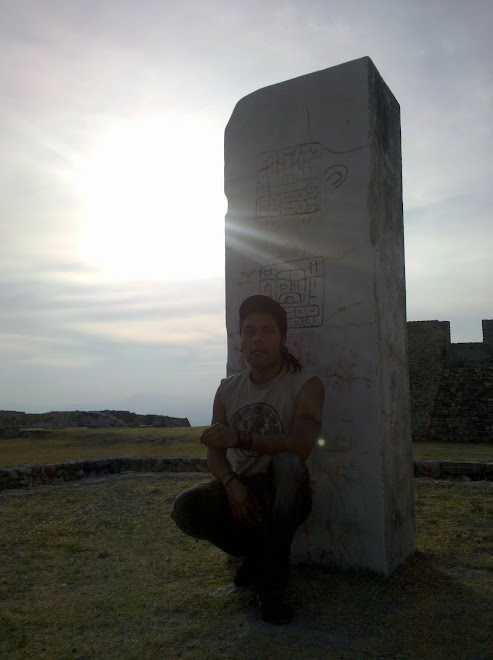


Monte Alban was the ancient capital of the Zapotecs and one of the first cities in Mesoamerica. During it's epoch, it was one of the most populated. It was founded approximately 500 years BC and flourished until 750 AD. Located in the central valley of Oaxaca, Monte Alban exercised political, economic, and ideological control over the other communities and surrounding mountains. Its principal constructions include the Great Plaza, the Ball Court, System II, The Danzantes (Dancers), Building J, Central Building G.H., the Palace, the southern platform, System 7 Deer and Tomb Number 7 of the Great Plaza.
The Ball Court is located to the left of the entrance to the Great Plaza, and has the defining characteristics of ball courts in this region. This court is marked by two structures at the sides of the rectangular base, with slanting walls. A sculpture representing a grasshopper covers most of the western side. The platform located on the western side contains a stair case flanked by two alfardas that end in talud, with two stelae in the largest part; there are two small niches contained there.
Monte Alban went through three more stages which all show evidence of a different culture. This means that through these stages different population sources entered the city leaving archeological evidence through their drawings and different engineering practices used in their buildings. Monte Alban's last occupants, the Zapotec were forced out, probably due to the aggressions of the Aztec. The city was no longer a force in political or social progression. It was then abandoned, but remained a religious and burial site until A.D. 1521.Illustrations of warfare can be illustrated by the Danzantes (dancers) which were carved into large stones. These figures symbolized slain enemy rulers and leaders who had been captured and mutilated by the citizens of Monte Alban. This ceremony was enacted to provide an offering to the gods so their crops would be plentiful.
During the Post Classic Period, about 2500-5500 people occupied this region. Most of the inhabitants did not live near the top of the hill, choosing instead to live closer to the base, but still inside of the protective barrier surrounding the city. The city was famous for its military strength, which supported itself economically, but soon agriculture bloomed and enveloped the community. This rise in agriculture led to a rise in population and may have been a reason for the decline of this massive powerhouse. Resources became scarce and peoples were forced to move on in order to survive. Another possible reason for its decline may have been corrupt administrators who destroyed the economic system causing dispersal of much of the population.
Monte Alban is famous for its attempt at basic calendars. The first was based on the agricultural season and the second based on the solar year. Both calendars had names for the months and days of their respective years and together they produced a time period of 52 years, the basic Mesoamerican cycle.


No comments:
Post a Comment